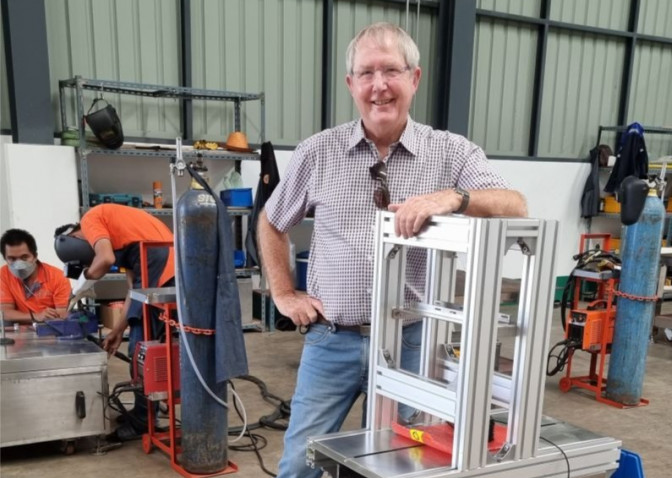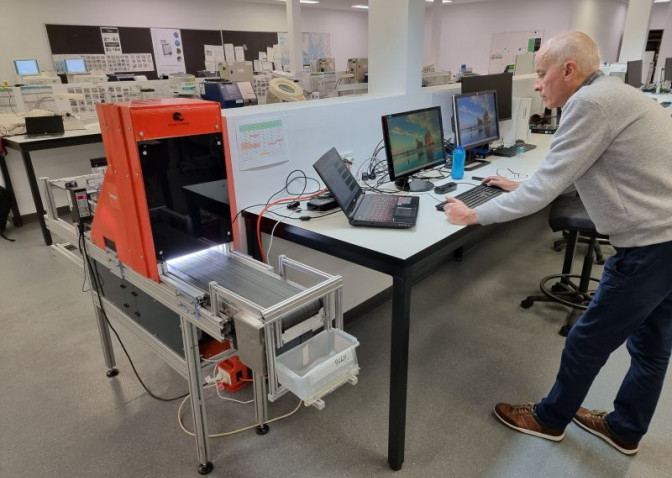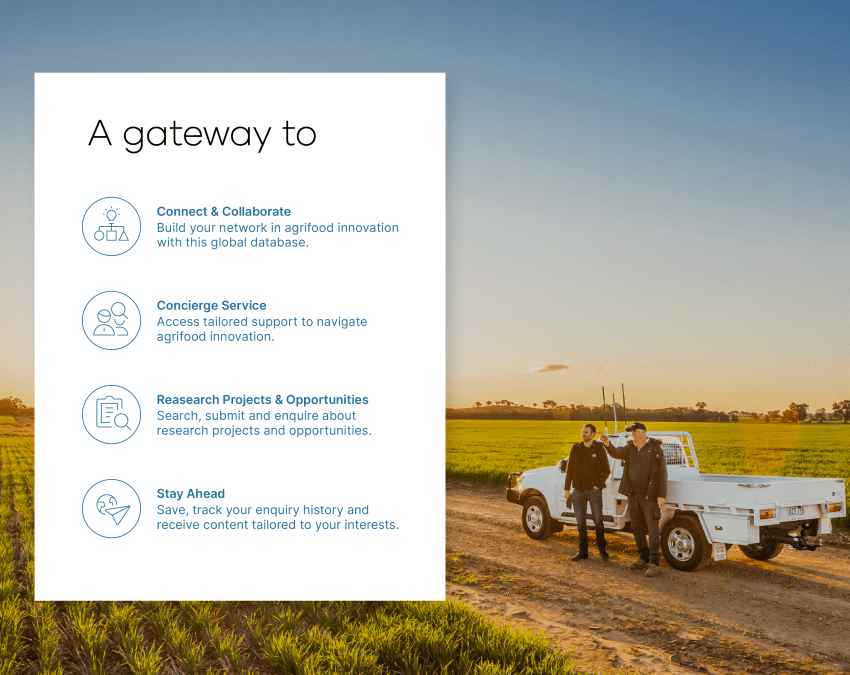
Platypus machine billed as the future of grain and cereal imaging
Industrial automation company Indyn has developed the world-leading “Platypus” analyser, taking human error out of the grain inspection process to revolutionise biosecurity and agri-trade. The founders are ready to go global and are seeking the right business partners to help them do it.
-crop-1185x680.png)
When European scientists first encountered the body of a platypus, they deemed it a grisly fabrication of several different animals stitched together.
When self-confessed ‘mad scientist’ Rob Martin began developing a new cutting-edge grain imaging technology, he couldn’t resist drawing comparisons.
“We give the name ‘Platypus’ to our machines that are made from bits and pieces of other equipment,” said Rob, CEO and Co-Founder of industrial automation company Indyn.
“As this technology began gaining traction, we thought about changing the name to sound more European and give it some more gravitas.
RELATED: MLA seeks global solution providers to enhance Australia’s red meat supply chain^
Related organisations


“But then I thought ‘why are we scared about sounding Australian?’. We know we’ve got world-leading technology, so we decided to stick with Platypus and own the fact we’re an Australian invention competing on the global stage.”
Inspecting grains to confirm value and assess biosecurity risk has traditionally been carried out by humans, but the likelihood and cost of errors is a challenge the industry has been attempting to mitigate for some time.
The Platypus system produces high resolution images of individual grains and processes them using deep learning technologies to detect factors imperceptible to the human eye.
As Martin explains, this has far-reaching implications.
“We’re moving into a whole new area of analysing the infrared range, the UV range, and collecting data we haven’t had access to before.
“People have been looking for the holy grail to replace the falling number process for a long time, and it turns out this technology might be the answer.”
RELATED: Qponics AU$1 million sought for marine microalgae to droughtproof protein supply^
Future-proofed technology to enhance the grain supply chain
As part of the Department of Agriculture, Fisheries and Forestry’s Biosecurity Innovation Program, Platypus is helping to replace human inspection at export terminal sites.
“Inspections are currently carried out as a boat’s being loaded, which is often too late to rectify any issues you find,” said Rob .
“We think the centre of gravity of the whole data acquisition should be moved upstream, but until now there hasn’t been technology really able to deliver that.
“What we’re trying to deliver to the Department is a system that can be used at any point in the grain supply chain, because you're better off accumulating data as it's coming from the producer to the traders.
“So, the traders are also potential end users of this technology, and we can even go a step back to the producers as well, who are getting a lot more proactive in the way they produce, store, and manage their product.
“By working backwards down the technology chain, we can deliver the data that helps them better characterise their product and become active marketers of it rather than just price takers.”
- Interested in this opportunity? Indyn is seeking engagement from venture capital investors and strategic partners with a strong commitment to the grains industry, and particular interest in biosecurity. Learn more via AgriFutures growAG. here. ^

The modular design of Platypus means it can incorporate newly emerging technologies such as short-wave infrared (SWIR) and hyperspectral imaging systems, as well as future developing technologies.
The calibration file which forms the core of the system is designed to be updated on a routine basis, making Platypus highly reproducible no matter where it is deployed in the field.
Indyn Co-Founder, Mike Nolan, said Platypus is not just designed to solve today’s problems.
“There are new technologies emerging all the time and we have the expertise and capability to take advantage of these as they develop,” said Mike.
“It was originally designed with the grains and cereals industries in mind, but the ability to handle lentils, chickpeas and several other crops is also under development.
“Platypus also lends itself to alternative crops such as tree nuts, coffee, some berries and fruits. We’re committed to the ongoing development and deployment of this technology.”
RELATED: Young Farmer of the Year behind new social media app for the agricultural community
Biosecurity and bulk grain trading expertise – key to expansion
-crop-672x478.png)
Venture capitalists and strategic partners now have the opportunity to become involved with the expanding global reach of Platypus.
Indyn is on the hunt for partners committed to the grains industry, with a particular interest in biosecurity and bulk trading.
“We’ve self-funded everything up until now, because we wanted to make sure the technology was fully developed before reaching for market penetration,” said Rob. “It’s just Mike and me right now, but we’re at the point where expansion is the next logical step, both in terms of business partners and more staff.
“We’d love someone to come onboard with experience in the grains industry, and a fire in the belly to get involved in what we’re building here.
“We honestly think we’re on the verge of spearheading a whole new industry. “We’re not looking at being the little Aussie battlers that eke out a two per cent share of the market – we’ve got the technology to be global leaders.”
For more on Indyn’s investment opportunity visit growAG..
Explore, find and connect with a wealth of research projects and innovation opportunities from across Australia’s agrifood innovation system at growag.com. To list a research project, commercialisation opportunity or organisation, please visit growag.com/submit.
^This investment opportunity is only for professional and sophisticated investors as defined in the Corporations Act 2001 (Cth). The content of this opportunity is intended for use by persons having professional experience in matters relating to investments and must not be acted or relied upon by any other person including, without limitation, retail clients.
-crop-850x675.png)
Looking for engagement?
Showcase your commercialisation opportunity today.
Talk to our team to discuss how growAG. can connect your innovation to industry.
Have questions? Find answers to our most frequently asked questions on research projects, commercial opportunities, organisations and more.
